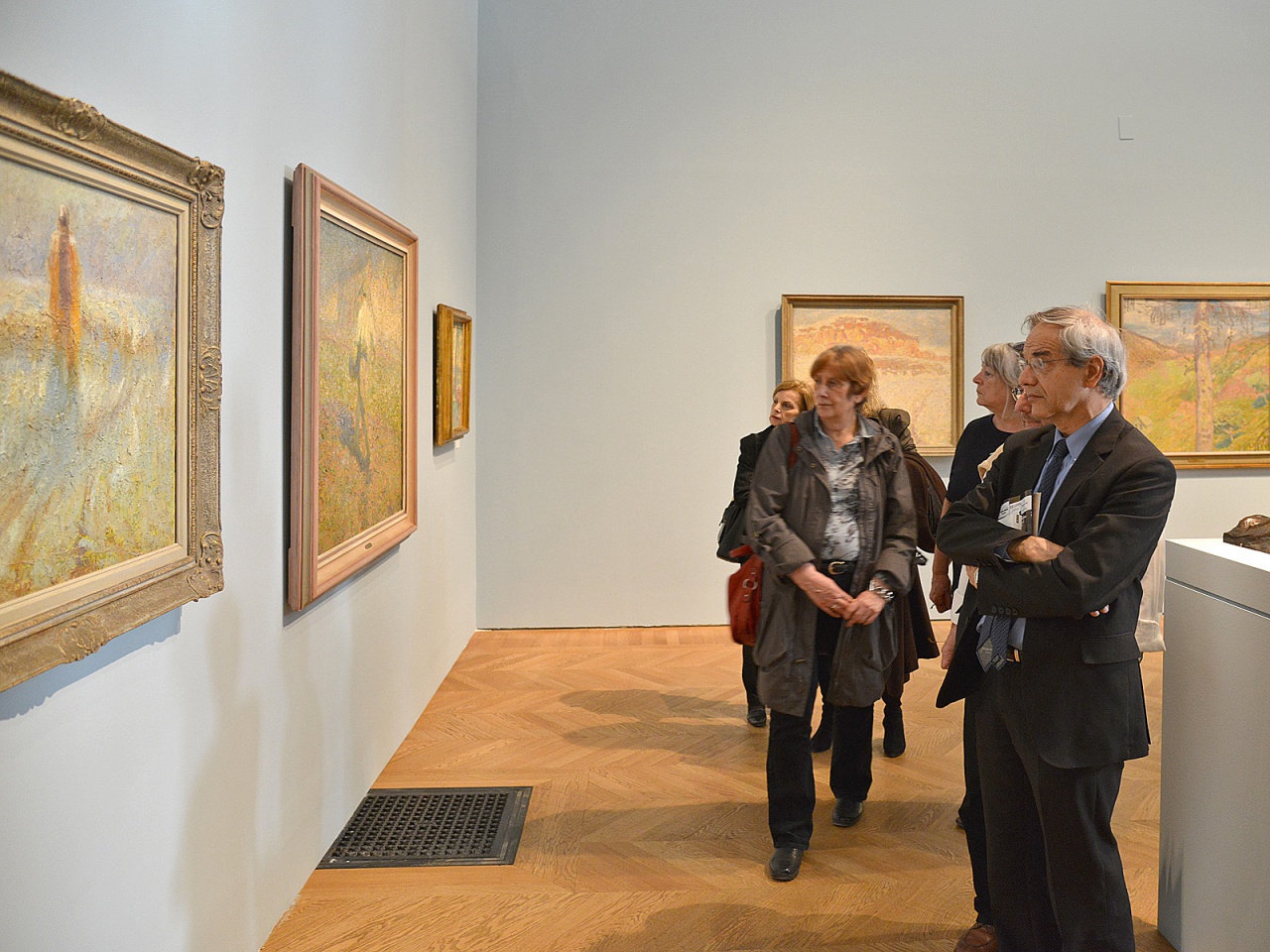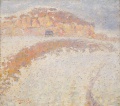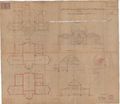Difference between revisions of "Category:Slovene Impressionists and their Time"
(image into teaser) |
|||
| (11 intermediate revisions by 5 users not shown) | |||
| Line 1: | Line 1: | ||
| − | {{ | + | {{Article |
| − | + | | status = NIFERTIK! | |
| + | | author = Helena Pivec and Alenka Pirman | ||
| + | | maintainer = Admin | ||
| + | | published date = | ||
| + | | title = | ||
| + | | subtitle = | ||
| + | | blurb = For those interested in Impressionism, the four Slovene Impressionist painters – [[Ivan Grohar]], [[Rihard Jakopič]], [[Matija Jama]], and [[Matej Sternen]] – have left an important legacy in Slovenia that has found its place internationally as well. | ||
| − | + | }} | |
| − | |||
| − | |||
| − | |||
| − | |||
| + | {{Teaser| | ||
| + | {{Image|Petit Palais 2013 Slovene Impressionism and their Time 1890–1920 exhibition 09.jpg}} | ||
| − | [[Category: | + | The four Slovene Impressionist painters – [[Ivan Grohar]], [[Rihard Jakopič]], [[Matija Jama]], and [[Matej Sternen]] – connected in Munich in the late 1890s. The impact of the Munich academy, the Secession movement and a well-known private painting school by the Slovene [[Anton Ažbe]] were formative for their creation. |
| + | }} | ||
| + | |||
| + | |||
| + | The nearly one-hundred-year-old vivid debate regarding modernism in Slovene fine arts has brought much mythologisation as well as many controversies about the sources and repercussions of its representatives. The interpretation of Impressionism or "naturlyricism", Post-Impressionism or Symbolism goes hand in hand with the analysis of the social and cultural-political context. Namely, that this group of artists which communicated across many art disciplines had a significant impact on the development of Slovene art as well as the establishment of the local art scene and its institutions (Jakopič set up the first exhibition space in 1909). | ||
| + | |||
| + | ==Iconic legacy== | ||
| + | Let us mention just one example of such cross-impacts: [[Ivan Grohar|Ivan Grohar's]] ''Sower'' (1907) is linked to Giovanni Segantini's painting and based on [[Avgust Berthold|Avgust Berthold's]] photo of the sower. It acquired the status of a national icon quite soon and now remains imprinted in the collective visual memory also as the sower of stars on the 5-cent euro coin. In 1987, the painters' collective [[Irwin]] of the [[NSK State|Neue Slowenische Kunst]] used the sower as the dominant motif in the project ''Slovenske Atene'' (Slovenian Athens), which also resulted in the international exhibition at the [[Moderna galerija (MG)|Museum of Modern Art]] in Ljubljana in 1991. | ||
| + | |||
| + | ==Slovene Impressionists in the international arena== | ||
| + | The first international presentation of the four impressionists (at the time members of the "Sava" group) took place in 1904 at the art salon Miethke in Vienna, the following one in Trieste in 1909. The Sava group exhibited also in Paris – during the Paris Peace Convention in 1919 in the scope of the Yugoslav art exhibition. | ||
| + | |||
| + | The [[National Gallery of Slovenia]] featured the exhibition ''Slovene Impressionists and their Time 1890–1920'' in 2008 on the occasion of the Slovenian Presidency of the European Union and the 90th anniversary of the National Gallery of Slovenia. In 2009, the exhibition ''Polish Painting circa 1900, Impressionism and Symbolism'' was prepared in cooperation with the Polish National Museum. From 18 April through 13 July 2013, the international public had the chance to see 200 selected art pieces at the Petit Palais in Paris. The selection of works was made by the curators Sylvain Lecombre, head curator of the Petit Palais, and [[Barbara Jaki]], director of the [[National Gallery of Slovenia]]. | ||
| + | |||
| + | |||
| + | Below you can find a list of public and private collections, archives and other articles that relate to the Slovene Impressionists on the Culture.si portal. | ||
| + | |||
| + | ==External links== | ||
| + | *[https://www.ng-slo.si/en/exhibitions-and-projects/exibition-or-project/slovene-impressionists-and-their-time-1890-1920?id=1535 About the exhibition ''Slovene Impressionists and their Time 1890–1920''] at the National Gallery of Slovenia with related links | ||
| + | *[https://www.petitpalais.paris.fr/expositions/les-impressionnistes-slovenes-et-leur-temps About the exhibition ''Slovene impressionists and their time 1890–1920''] at the Petit Palais (in French) | ||
| + | |||
| + | |||
| + | [[Category:Selected]] | ||
| + | [[Category:Topics]] | ||
| + | [[Category:Updated 2020]] | ||
Latest revision as of 22:40, 5 March 2021
The nearly one-hundred-year-old vivid debate regarding modernism in Slovene fine arts has brought much mythologisation as well as many controversies about the sources and repercussions of its representatives. The interpretation of Impressionism or "naturlyricism", Post-Impressionism or Symbolism goes hand in hand with the analysis of the social and cultural-political context. Namely, that this group of artists which communicated across many art disciplines had a significant impact on the development of Slovene art as well as the establishment of the local art scene and its institutions (Jakopič set up the first exhibition space in 1909).
Iconic legacy
Let us mention just one example of such cross-impacts: Ivan Grohar's Sower (1907) is linked to Giovanni Segantini's painting and based on Avgust Berthold's photo of the sower. It acquired the status of a national icon quite soon and now remains imprinted in the collective visual memory also as the sower of stars on the 5-cent euro coin. In 1987, the painters' collective Irwin of the Neue Slowenische Kunst used the sower as the dominant motif in the project Slovenske Atene (Slovenian Athens), which also resulted in the international exhibition at the Museum of Modern Art in Ljubljana in 1991.
Slovene Impressionists in the international arena
The first international presentation of the four impressionists (at the time members of the "Sava" group) took place in 1904 at the art salon Miethke in Vienna, the following one in Trieste in 1909. The Sava group exhibited also in Paris – during the Paris Peace Convention in 1919 in the scope of the Yugoslav art exhibition.
The National Gallery of Slovenia featured the exhibition Slovene Impressionists and their Time 1890–1920 in 2008 on the occasion of the Slovenian Presidency of the European Union and the 90th anniversary of the National Gallery of Slovenia. In 2009, the exhibition Polish Painting circa 1900, Impressionism and Symbolism was prepared in cooperation with the Polish National Museum. From 18 April through 13 July 2013, the international public had the chance to see 200 selected art pieces at the Petit Palais in Paris. The selection of works was made by the curators Sylvain Lecombre, head curator of the Petit Palais, and Barbara Jaki, director of the National Gallery of Slovenia.
Below you can find a list of public and private collections, archives and other articles that relate to the Slovene Impressionists on the Culture.si portal.
External links
- About the exhibition Slovene Impressionists and their Time 1890–1920 at the National Gallery of Slovenia with related links
- About the exhibition Slovene impressionists and their time 1890–1920 at the Petit Palais (in French)
Articles in category "Slovene Impressionists and their Time"
The following 29 pages are in this category, out of 29 total.
A
M
Media in category "Slovene Impressionists and their Time"
The following 21 files are in this category, out of 21 total.
- Ivan Grohar 1905 Kamnitik.jpg 1,600 × 1,412; 1.2 MB
- Maks Fabiani Foundation 1908 Jakopic Pavilion sketch 1.jpg 5,138 × 2,503; 20.25 MB
- Maks Fabiani Foundation 1908 Jakopic Pavilion sketch 2 .jpg 5,138 × 2,561; 20.34 MB
- Maks Fabiani Foundation 1908 jakopi pavilion sketch.jpg 9,213 × 8,000; 16.44 MB
- Matej Sternen 1909 Na divanu.jpg 1,600 × 1,211; 988 KB
- Matija Jama 1909 Vrbe.jpg 1,600 × 1,195; 1.14 MB
- National Gallery of Slovenia 2013 permanent exhibition Photo Janko Dermastja (10).jpg 4,256 × 2,832; 2.27 MB
- Petit Palais 2013 Slovene Impressionism and their Time 1890–1920 exhibition 01.jpg 1,600 × 1,200; 779 KB
- Petit Palais 2013 Slovene Impressionism and their Time 1890–1920 exhibition 02.jpg 1,600 × 1,200; 744 KB
- Petit Palais 2013 Slovene Impressionism and their Time 1890–1920 exhibition 03.jpg 1,600 × 1,200; 757 KB
- Petit Palais 2013 Slovene Impressionism and their Time 1890–1920 exhibition 04.jpg 1,600 × 1,200; 668 KB
- Petit Palais 2013 Slovene Impressionism and their Time 1890–1920 exhibition 05.jpg 1,600 × 1,200; 837 KB
- Petit Palais 2013 Slovene Impressionism and their Time 1890–1920 exhibition 06.jpg 1,600 × 1,200; 891 KB
- Petit Palais 2013 Slovene Impressionism and their Time 1890–1920 exhibition 07.jpg 1,600 × 1,200; 827 KB
- Petit Palais 2013 Slovene Impressionism and their Time 1890–1920 exhibition 08.jpg 1,200 × 1,600; 933 KB
- Petit Palais 2013 Slovene Impressionism and their Time 1890–1920 exhibition 09.jpg 1,600 × 1,200; 744 KB
- Petit Palais 2013 Slovene Impressionism and their Time 1890–1920 exhibition 10.jpg 1,600 × 1,200; 729 KB
- Petit Palais 2013 Slovene Impressionism and their Time 1890–1920 exhibition catalogue.jpg 1,768 × 2,211; 1.45 MB
- Rihard Jakopič 1903 Kamnitnik v snegu.jpg 1,600 × 1,311; 1.32 MB
- Slovene Impressionists and Their Time poster 2013 Petit Palais Paris.jpg 2,454 × 3,489; 6.36 MB
























